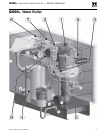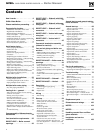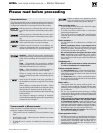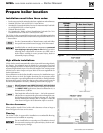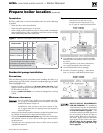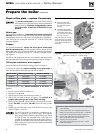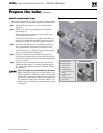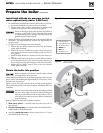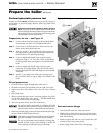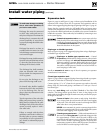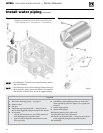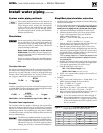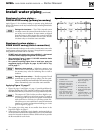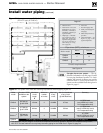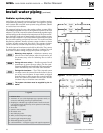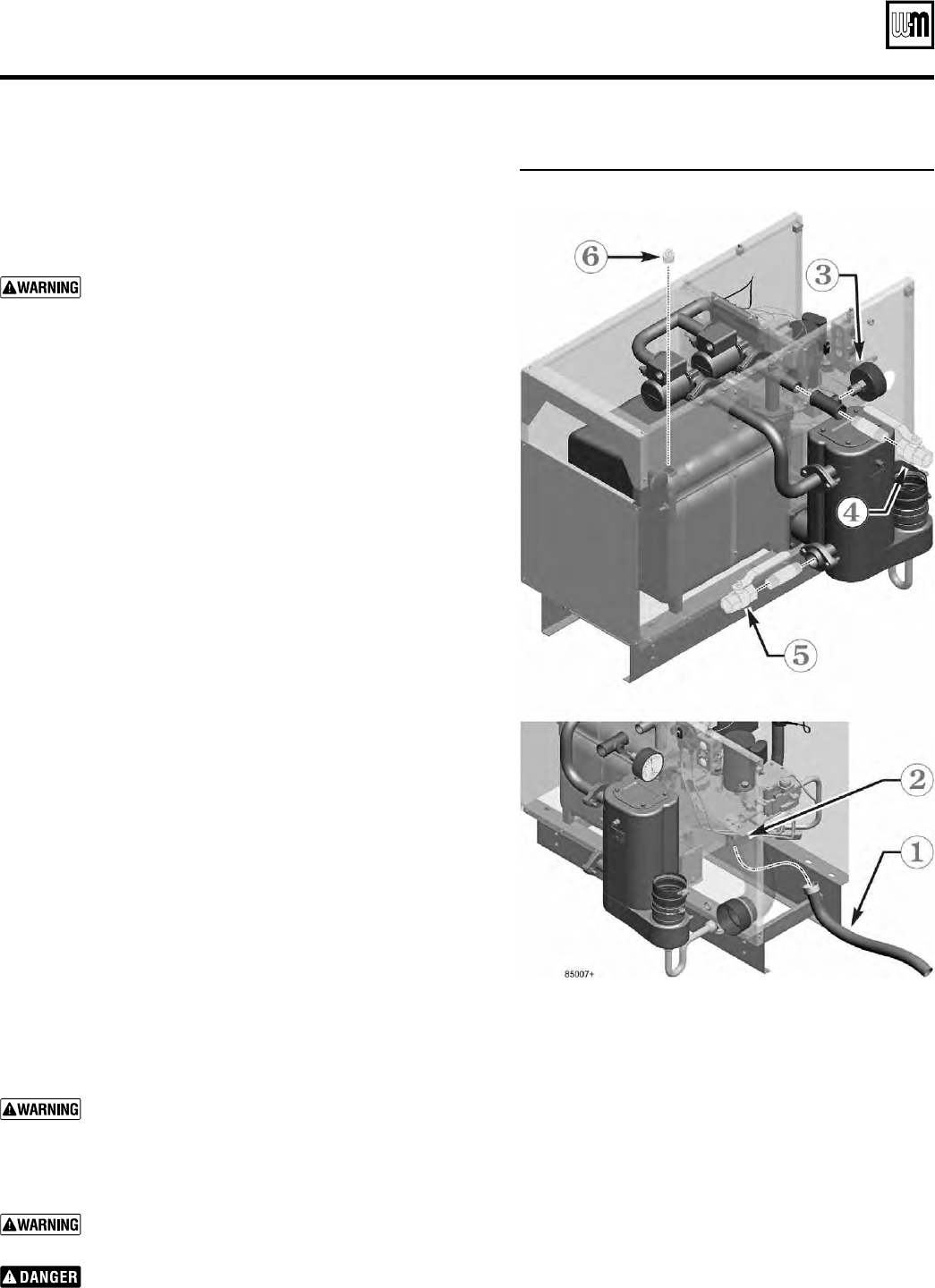
Part number 550-142-054/0411
11
GV90+ gas-fired water boiler — Boiler Manual
Figure 10 Piping connections for hydrostatic test
Perform hydrostatic pressure test
Pressure test boiler before attaching water or gas piping (except as
noted below) or electrical supply. Remove jacket top panel before
proceeding.
Use two wrenches when tightening water piping at
boiler
, using one of the wrenches to prevent the boiler
interior piping from turning. Failure to support the boiler
piping connections to prevent them from turning could
cause damage to boiler components.
Prepare boiler for test — see Figure 10
Step 1 Connect a hose from water supply to fill and drain boiler
for hydrostatic test. Hose is not included with boiler.
Step 2 Connect hose to boiler drain valve. Make sure hose can
also be used to drain boiler after test.
Step 3 Remove 1" nipple, 1" tee, bushing and pressure/tempera-
ture gauge from accessory bag. Pipe to boiler supply con-
nection as shown. Use pipe dope sparingly.
Step 4 Connect a nipple and shutoff valve to system supply
connection on the 1" tee. This valve will be used to bleed
air during the fill. Valve and nipple are not included with
boiler.
Step 5 Connect a nipple and shutoff valve to system return
connection at circulator flange. This valve will be used to
bleed air during the fill. Valve and nipple are not included
with boiler.
Step 6 Install a ¾" pipe plug in the relief valve opening, top of
the rear boiler section, as shown. Plug is not included with
boiler.
Fill and pressure test
1. Connect fill water supply through drain valve, item 2.
2. Fill boiler with water (be sure bleed valves at 4 and 5 are open).
3. When water flows from bleed valves, shut off water at drain
valve.
4. Close bleed valves.
5. Slowly reopen drain valve (item 2) until test pressure of 45 PSIG
(or 1.5 times boiler relief valve setting — NEVER MORE than
75 PSIG) is reached on the pressure gauge.
6. Test at this pressure for no more than 10 minutes.
Do not leave boiler unattended. A cold water fill could
expand and cause excessive pressure, resulting in severe
personal injury, death or substantial property damage.
7. Make sure constant gauge pressure has been maintained through-
out test. Check for leaks. Repair if found.
Leaks must be repaired at once. Failure to do so can dam-
age boiler, resulting in substantial property damage.
Do not use petroleum-based cleaning or sealing com-
pounds in boiler system. Severe damage to boiler will
occur, resulting in substantial property damage.
Drain and remove fittings
1. Disconnect fill water hose from water source.
2. Drain boiler at drain valve or out hose, whichever pro-
vides best access to drain. Close drain valve and remove
hose after draining.
3. Remove nipples and valves at 4 and 5 unless they will
remain for use in the system piping.
4. Remove plug (item 6) from relief valve tapping.
Prepare the boiler (continued)



